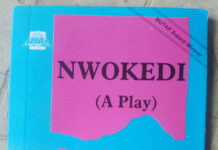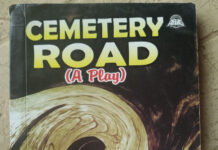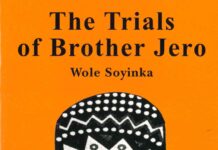📢 Follow our WhatsApp Channel for the latest literary updates!
Sizwe Bansi is Dead is a satirical play written by Athol Fugard, John Kani, and Winston Ntshona to reflect the migratory troubles and the harsh living conditions of the black people during apartheid period in South Africa.
Athol Fugard et al employ the use of several dramatic techniques in the play, Sizwe Bansi is Dead, purposely to depict the ugly side of the apartheid system in South Africa. The playwrights use these to portray the identity crises and the dehumanisation of black people when the apartheid policy was at its peak in South Africa.
Some of the dramatic techniques employed in Sizwe Bansi is Dead are flashback, mimicry, dramatic monologue, and symbolism.
Flashback
Flashback is a dramatic technique used in recalling past events in a text. The flashback technique is judiciously used in Sizwe Bansi is Dead to introduce the audience to past events. The playwrights use flashback to raise the audience awareness about the plight of black South Africans working and issues of land ownership and identities.
Styles’ photographic studio is significant in the retelling of these past events. Black people throng to his studio to realise their dreams. They tell their stories which mirror the frustrations and degradation of the black majority in South Africa.
It is through the use of flashback that Bansi is able to tell his own story, allowing the audience to come to terms with the predicament of him and the black majority he represents, and empathise with the character and others like him.
Mimicry
Mimicry is one of the important dramatic techniques used in Sizwe Bansi is Dead. The playwrights use this technique to satirize and ridicule the white people and even show in all their perceived superiority their human tendencies of fear and anxiety.
We see Styles mimic the heavy Afrikaans accent of Baas Bradley. Styles also imitates gestures of Baas Bradley. Styles interpretation of Bradley’s speech to his fellow blacks tends to be humorous and reflects the realities of black people in South Africa. We also witness Sizwe Bansi’s Buntu mimicry.
Dramatic Monologue
Again, Athol Fugard et al use this technique through Styles to expose the evils of the apartheid sytem in South Africa. Styles speaks directly to the audience about his fears, hopes and reactions against the apartheid system.
Dramatic monologue serves two purposes in the play. One, it ensures the continuity of action in the play. Two, it enables the audience to empathise with Styles’ sufferings, and the challenges the generality of black South Africans face on the account of the apartheid system.
Symbolism
Symbolism is yet another integral dramatic technique in Sizwe Bansi is Dead. There are many symbols in the play. Styles’ decision to resign from Ford’s Motors is symbolic in that it shows that Styles is now free in his own right and ready to make his own decisions. His photographic studio is symbolic in itself. It provides temporary respite for the black people seeking to escape from the stifling laws of the apartheid system. The studio also serves as an avenue for black South Africans to manoeuvre around the system.
The cockroaches also symbolise the oppressing white minorities while the insecticide, ‘Doom’, represents the mechanism put in place to eliminate the white oppressors. Styles’ camera is used to capture the dreams and aspirations of the black South Africans. The pass book and the white police symbolise the cruel apartheid system and a flagrant abuse of global human right practices.
Join Our Social Media Channels:
- WhatsApp: Literature PADI
- Telegram: Literature PADI
- YouTube: @literaturepadi
- Facebook: Literature PADI










